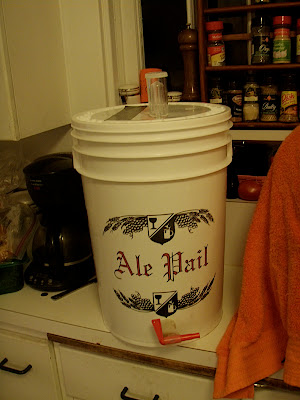Certainteed
Active Member
Is it possible to do this and still get a decent amount of carbonation? Can anyone help determine how to do this?

Is it possible to do this and still get a decent amount of carbonation? Can anyone help determine how to do this?
do you like to live on the edge? bottle bombs,over carbed beer, or just right. lets roll them dice. Damn,crapped out.
adding sugar isn't hard its just not true to old styles
February 14, 2008 - Homebrew History
Charlie Papazian shares a bit of homebrew history 30 years after legislation legalizing home brewing passed Congress. Also, home brewer Robb Holmes talks about brewing when it was breaking the law.
Click to play Mp-3
[what you meant to post]Thank you for the mentioning satellite fermentation. I'll go look it up right now.[/wymtp]
you got no information so you try to be cute?
no problem i'll figure it out myself. thanks for nothing.
You are welcome.

you got no information so you try to be cute?
no problem i'll figure it out myself. thanks for nothing.
Oh god, not satellite fermenters...A satellite fermenter is just as bad a "sign of fermentation" as counting bubbles in an airlock.
That "satellite fermenter" idea will only tell you WHAT YOUR BEER WILL FINISH AT, NOT when your 5 gallon batch of beer will be done.
It's used to measure attenuation of the yeast, not rate of fermentation.
<snip>
The young Jedi learns quick. From earlier this year . .ugh shoot me
i have a hydrometer. i can manipulate maths. no sweat guys i'll work it out myself.
Now he has his procedure down to where he hits his final gravity every time and only needs to "manipulate maths."i'll do grain someday. for now i'm a dumb noob and need to produce something drinkable to boost my confidence and help keep the interest up.

Bottle early and skip priming sugar? Is it possible to do this and still get a decent amount of carbonation? Can anyone help determine how to do this?
no please stop assuming and jumping to conclusions. in the wayback olden days this was common practice.
you got no information so you try to be cute?
no problem i'll figure it out myself. thanks for nothing.
Perhaps the written form is not for you. Exactly how are we to know your level of brewing comprehension and process based upon you question? Just who is assuming and jumping to conclusions?ugh shoot me
i have a hydrometer. i can manipulate maths. no sweat guys i'll work it out myself.
ugh shoot me
i have a hydrometer. i can manipulate maths. no sweat guys i'll work it out myself.
Is it possible to do this and still get a decent amount of carbonation? Can anyone help determine how to do this?
It is possible to do it, but it's not worth the trouble for an ordinary beer. I am guessing this is just for fun or for an experiment? You are more likely to get over-carbonation than under-carbonation. The reason it's so dangerous is that it's unreliable. If you want to try it, you can predict what your gravity will end at and add about 0.003 to the gravity (what I figured for roughly 5oz of dextrose on 5 gallons). So if you think your beer will end at about 1.008 you can shoot for about 1.011 or a little less. Be very careful when doing this as you know temperature can offset hydrometer readings, and not all of them are calibrated perfectly. Also the human eye is imperfect. Is this an experiment you are doing, just for fun, speculation, etc.?
thanks for your time. you are tremendously helpful.
its seems like a waste if they could get it right 200 years ago so can i.
I think that breweries used to do a quick "satellite" fermentation to find out what the FG was going to be, then stopped the main batch a few points shy of that. So - if you have the ability to do a reliable satellite, then yes it can be done. If not - adding sugar isn't hard.
Enter your email address to join: